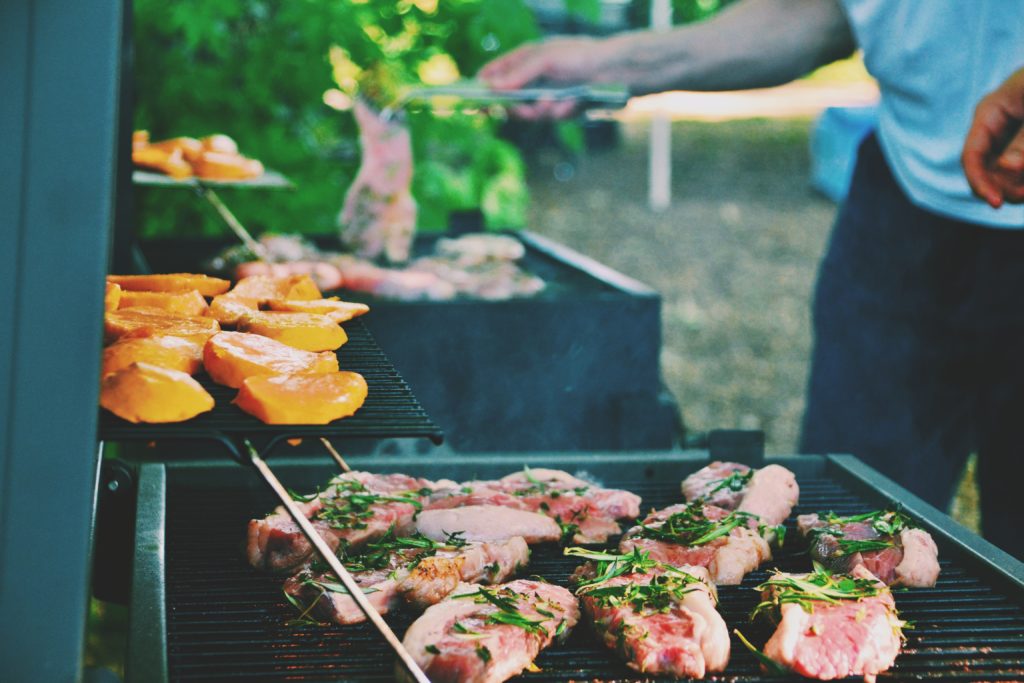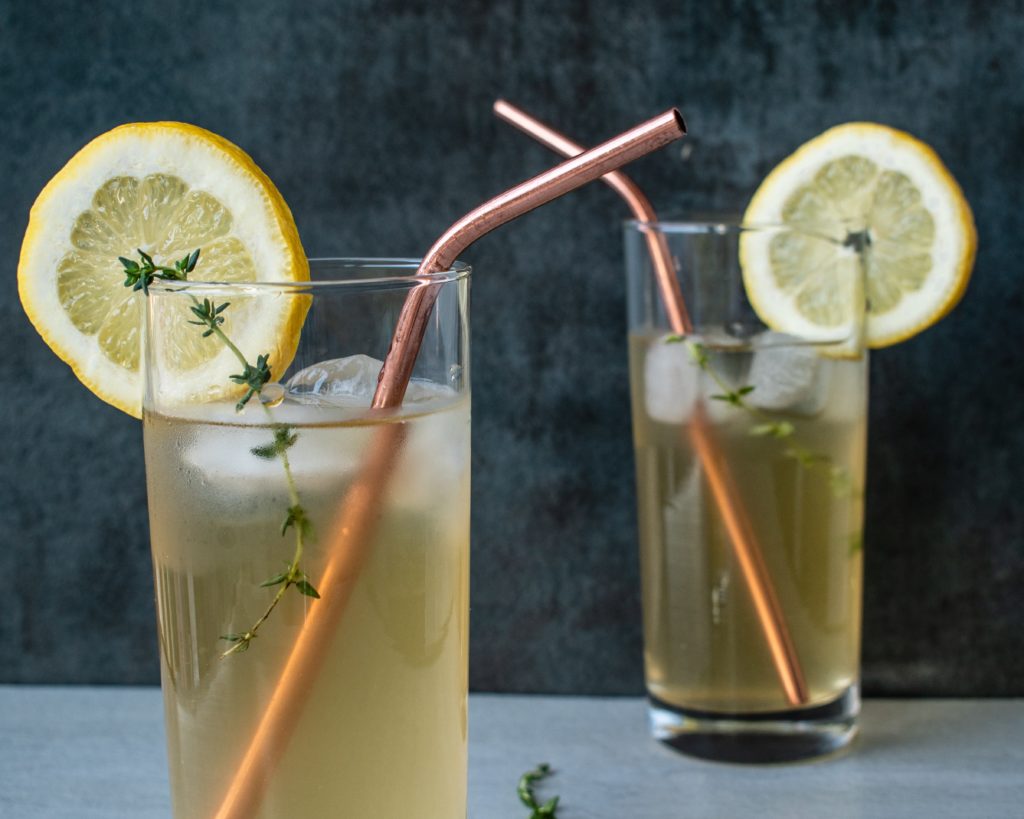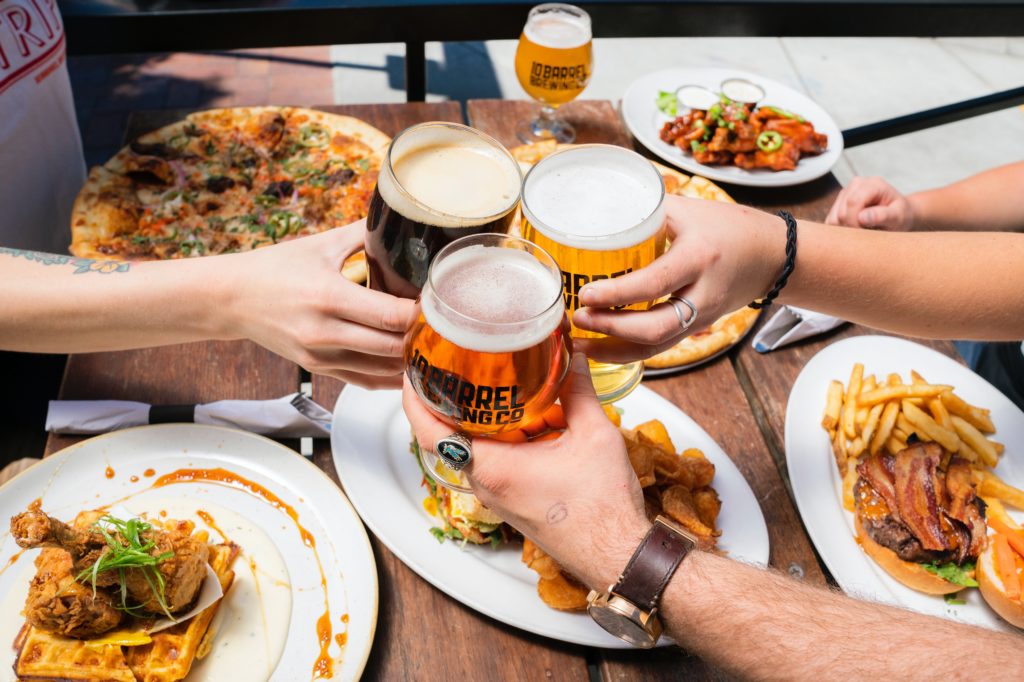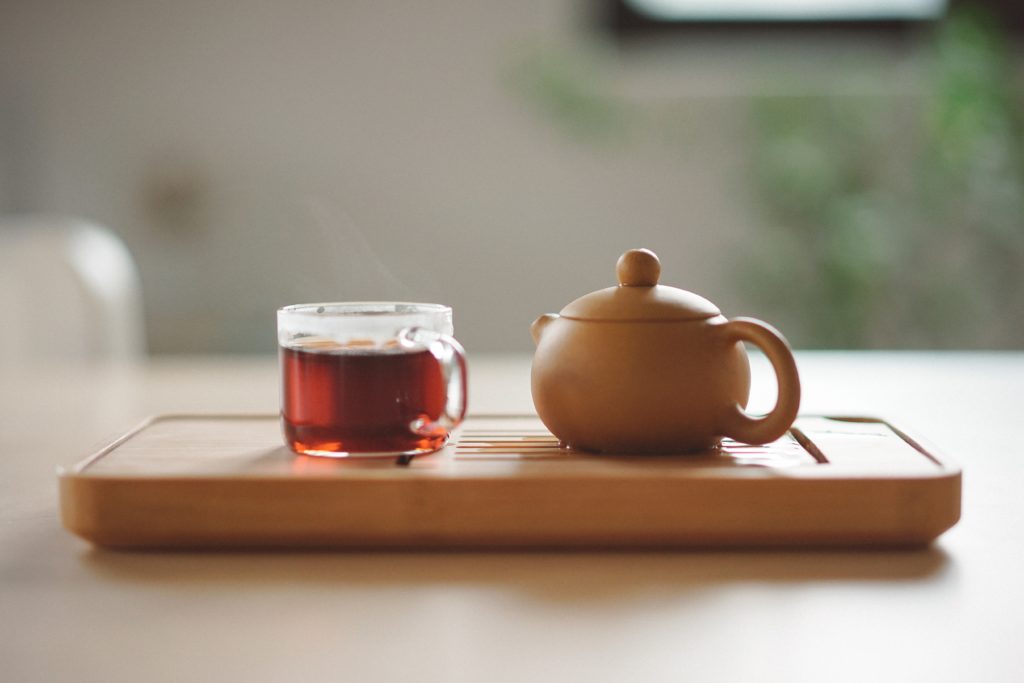
We celebrate the nation’s birthday with fireworks and get-togethers, with dips in pools and streams to beat the heat and red, white and blue decorations.
And we feast. Hot dogs and hamburgers. Pulled pork and hot links. Deviled eggs, potato salad, grilled chicken and ice cream. Cold cans of beer might punctuate the day, too.
Here at Ku Cha House of Tea, we naturally include one of the world’s oldest beverages in the festivities.
We sip iced tea across the day, for energy and refreshment. And we also savor cups of certain kinds of tea after all of that feasting. Among tea’s many benefits is its ability to improve digestion — people in China have turned to tea to settle stomachs for centuries. After two hot dogs, four deviled eggs, a green chile cheeseburger, a bowl of ice cream with a brownie and three beers, digestion will need all of the help it can get.
For our annual July 4 parties, we rely upon oolongs and pu-erhs.

Oolong tea
We are crazy for oolongs, which come in hundreds of different styles. All traditional tea begins with leaves or buds (and sometimes both) from the Camellia sinensis bush, which was first discovered in 2737 B.C.E. by Emperor Shen Nong. While boiling water in his garden, according to legend, a leaf from a wild tea bush landed in his pot. He liked the result.
That was green tea — a fresh leaf in boiling water.
Oolong begins life as green tea. But it then undergoes oxidization, which transforms the flavors. Where green tea often tastes grassy and bright, oolongs gain more depth, offering flavors ranging from honey to mushrooms to floral.
In China, people drink oolong for many reasons, including outstanding flavor and digestion support.

Lemon Blossom Oolong tea for digestion
The beauty of drinking oolongs for July 4th is you can help prevent indigestion across the day, rather than just after the meal. We make gallons of iced Lemon Blossom Oolong every summer, sipping it from morning until we go to bed. The delicate lemon flavor combined with flower petals and oolong’s earthiness makes this tea especially delightful for all-day sipping. The combination, too, helps cut through the fatty meals that tend to define July 4 feasting.
Later in the day, after hours of noshing, we often turn to Da Hong Pao, a classic oolong that works wonders with roiling stomachs.
Da Hong Pao means “Big Red Robe” in Chinese. The reference is a bit obscure, but we think we understand. The tea indeed is “big” — it’s a bold oolong. And red robes bring to mind royalty, and Da Hong Pao is considered one of the finest oolongs in the world. The tea offers strong fragrance and a rich, roasted flavor followed by a pleasant, lingering sweetness.
Da Hong Pao, a rock oolong, is grown in the Wuyi Mountains in China’s Fujian Province. And it’s legendary, with references to it as far back as the 18th Century.

Pu-erh
Oolongs like Da Hong Pao undergo oxidation. So do pu-erhs. But ripe pu-erhs add an additional step — they undergo fermentation. In the world of tea, pu-erhs are the most unusual. No other classic teas get fermented. Another twist: pu-erhs are crafted from large-leaf Assamica varieties of Camellia sinensis.
Artisans shape many pu-erhs into cakes, which they wrap in paper and age, sometimes for decades. Just as with wine, pu-erhs gain complexity and depth as the leaves evolve with age.

Organic Ripe Pu-erh tea for digestion
We carry a long line of organic teas, including this delicious ripe pu-erh. As with all pu-erhs, the tea comes from China’s Yunnan Province, a southern region that borders Vietnam, Laos and Myanmar.
Cold-brewing this lovely pu-erh creates gorgeous iced tea, which like Lemon Blossom Oolong we sip all day during the summer. And due to its ability to improve digestion, we also sip it warm after meals, a practice common across China.
The tea is rich and smooth, with a long-lasting, earthy aftertaste. It indeed offers bold flavors, but at the same time it leaves your mouth feeling cool and moist, and eager for the next cup. Organic ripe pu-erh has a pleasing “cha qi,” which in Chinese means “life force.” Sipping it makes you feel grounded and light at the same time.
Enjoy the holiday weekend! And don’t forget to drink oolongs and pu-erhs. Not only will they enliven your spirit and slake your thirst — they will give you comfort after that last bite of brownie.

